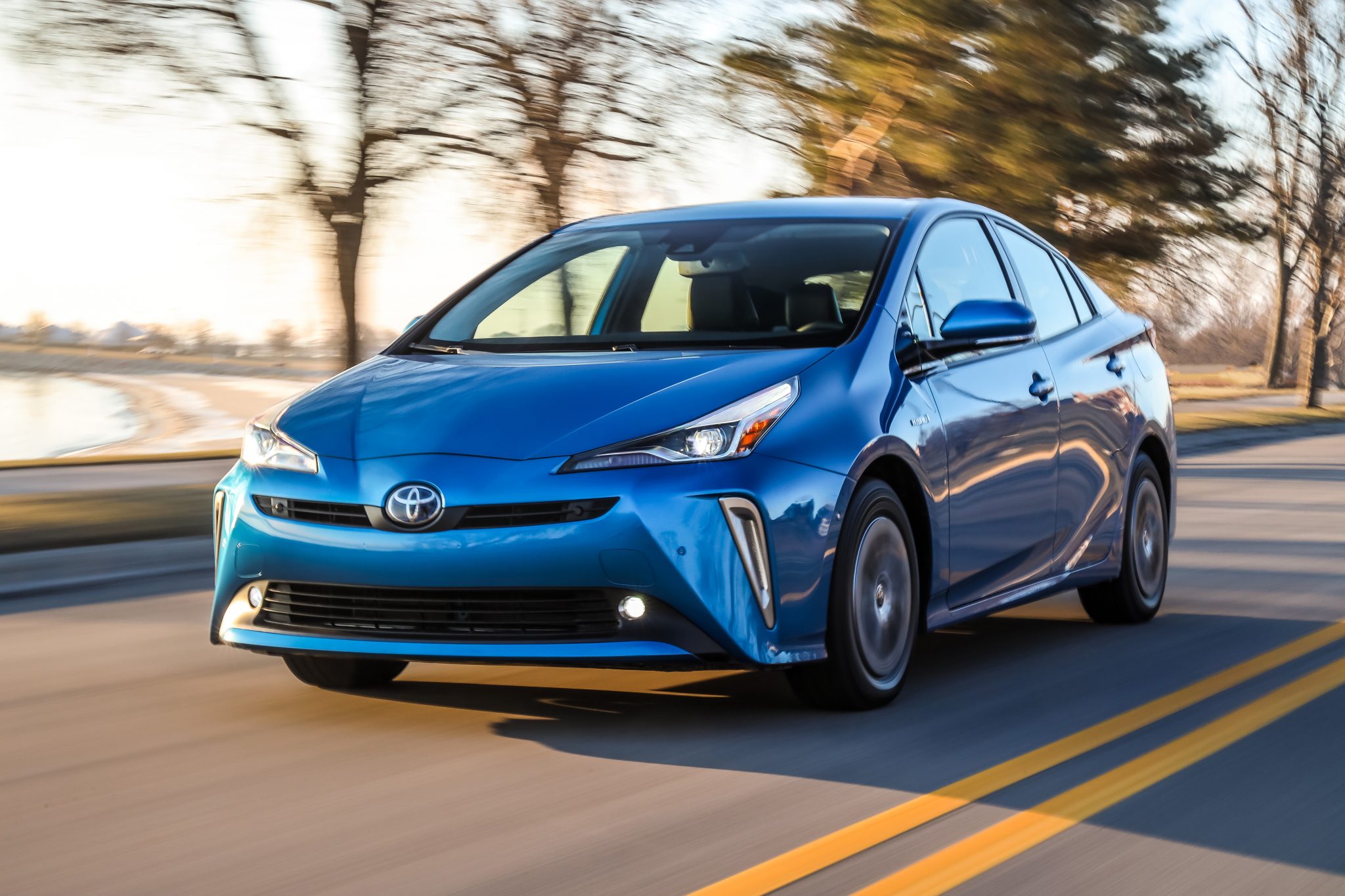By Peter Perrotta
This weekly auto review column has a way of spoiling a person – namely me.
I get to drive all different makes and models of some of the most expensive vehicles on the
market. These vehicles are all usually top-of-the-line models crammed with all of the latest technologies and options available.
I must admit when I looked at my road test schedule and saw I was getting the 2020 Toyota Prius XLE AWD-e Hybrid, I wasn’t as excited as when I have the latest Mercedes or BMW to drive for a week.
However, I must admit that after driving the 2020 Prius XLE AWD-e Hybrid for one week
recently, I thoroughly enjoyed every minute behind the wheel of this compact sedan. This is one car that really surprised me. I really didn’t think I was going to like driving it as much as I did.
Okay, so what exactly did I like about it?
Well, almost everything.
For a small compact sedan, I fit in it like a glove – and I am 6 feet tall.
Moreover, the car is zippy, handles well and has enough interior luxury accoutrements to make it seem like an expensive luxury car. This Prius model offers up all wheel drive, as well.
So, even in the driving rainstorm we had one recent Saturday, I piloted the Prius through
puddles and puddles of water with great confidence and ease. It handled the inclement weather with great ease and performance, never wavering.
And, of course, the coupe de grace with the Prius Hybrid is how economical it is to drive
and own one of these vehicles. For example, the Prius XLE AWD-e Hybrid gets an incredible EPA fuel mileage rating of 50 miles per gallon overall – 48 mpg on the highway and 52 in the city.
This Prius hybrid uses about 2 gallons of gas for every 100 miles of travel.
The folks at Toyota estimate the average motorist will spend a miserly $800 per year in fuel cost to drive it.
So how does Toyota make these Prius Hybrids so powerful – for a compact car – and efficient at the same time?
Toyota has become quite adept at marrying its gas engine with an electric battery – located
under the rear passenger seat – to obtain maximum fuel efficiency without sacrificing power.
This particular Prius model features a 1.8-liter, 4-cylinder aluminum block engine with a 90-kilowatt electric battery. There is a very cool diagram that displays on the center console infotainment screen that shows the drive when the vehicle is operating on the gas engine, when it is on battery power and when the electric battery is being recharged.
The 1.8-liter gas engine puts out 96 horsepower at 5,200 rpm. The 90-kilowatt electric battery adds an additional boost of 121 horsepower. Thus, between the gas engine and electric motor this Prius puts out an impressive 217 horsepower.
In actual driving conditions, I found this tester to have more than ample power to get it on and off the highway ramps with ease. In city, or more congested driving, the Prius was an ample performer, as well.
On the center of the dash, just below the center infotainment screen, there is a power mode selector offering three choices – eco, nomal and power.
For most of the week that I drove the car, I selected the power mode because I enjoyed the
extra added oomph this mode seemed to provide.
By doing this, I sacrificed some of the great gas mileage this vehicle features but, overall, if I was getting 45 mpg instead of 50 mpg to get this added power boost, I considered it well worth it.
This all wheel drive Prius is the first-ever Prius to offer up the all wheel drive system, thus
making it one of the most fuel efficient AWD equipped vehicles available in the United States.
The “e” in the AWD-e is the key to offering the extra grip of the all-wheel-drive system while still sipping fuel. The automatic, on demand system does not require center differential or other torque apportioning device. It also doesn’t have a front-to-rear driveshaft. Instead, the “e” in the AWD-e stands for electronic.
Under this system, an independent electric, magnet-less rear motor – a first for Toyota – powers the rear wheels away from a stop up to 6 mph.
This same rear electric motor can – when conditions demand – also operate at speeds up to 43 mph, as well. By recognizing when all wheel drive is not needed, this intelligent, on-demand system runs in front wheel drive as much as possible to maximize fuel economy.
The MSRP sticker price of the vehicle I tested for one week was $31,005. The base price is
$29,250. Added to the base model – on my tester – was $800 for an advanced technology package and $995 for destination charges.
The advanced technology package included a color heads up display with speedometer and
hybrid system indicator; an adaptive front lighting system; and auto leveling headlamps.
Overall, I must say I was very impressed with this Prius and I would highly recommend it to anyone who is looking to lease or purchase a hybrid compact sedan.
Peter Perrotta’s On The Road column appears weekly. Comments and questions are welcomed. To contact him email [email protected].

